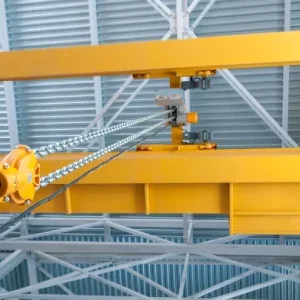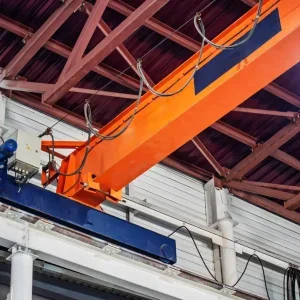The offshore industry presents one of the most arduous, difficult and challenging working environments known to man. Severe weather conditions and sudden and wide variations in temperature make safety a key issue, especially where lifting gear is concerned.
All offshore equipment requires stringent examination, inspection and maintenance and chain blocks and lever hoists are no exception – the very nature of these vital pieces of equipment being that operators are relying on them to support loads or control the movement of critical appliances. Failure, leading to potential loss of life or substantial damage, is clearly not an option.
In the UK, the Lifting Operations & Lifting Equipment Regulations (LOLER) now place a legislative obligation on companies owning lifting gear to ensure that all equipment is safe and suitable for its intended use and tested in accordance with rigid examination procedures. Elsewhere, there may not be such a stringent legal framework, but LOLER’s requirements offer a template for best practice.
At the very least, it is recommended that operators carry out routine visual inspections before lifting equipment goes into service. It is even more crucial offshore, not least because wear and tear is accelerated at sea. Constant exposure to salt water spray quickly leads to the removal of lubricant and propagates oxidation on any affected areas as the equipment goes through a cycle of ‘wet’ and ‘dry’ operation. This is particularly true in the North Sea and Norwegian sectors.
As an absolute minimum, visual checks should be carried out each time a hand operated chain block or lever hoist is scheduled for use. Relevant and up-to-date product documentation should remain close to hand and chain blocks and lever hoists should also carry the appropriate ‘colour coding’ for the period.
Minimising the strain
I would hazard a guess that few operators of either hand operated chain blocks or lever hoists, take the time and trouble to carry out these visual checks. As routine checks, they may seem tedious and a little over the top, but in reality it is a small price to pay for saving a life or preventing a disaster.
Bear in mind that these visual examinations are only the first stages. Only fully qualified lifting equipment engineers should strip down items of lifting equipment, while comprehensive repair, inspection and testing requires a number of additional checks. These require specialist knowledge and should only be carried out when examiners are fully trained and the correct examination and testing equipment is available.
The UK’s Health & Safety Executive and the Lifting Equipment Engineers Association have recently established an offshore block project working group to carry out tests to determine the impact of the sub sea operation on chain blocks and lever hoists. It is now recognised that this can be an even more aggressive operating situation, the loss of lubrication on moving components being one of many potential problems. The working group has complied a draft code of practice which, once finalised, is likely to be adopted across all offshore industries.






